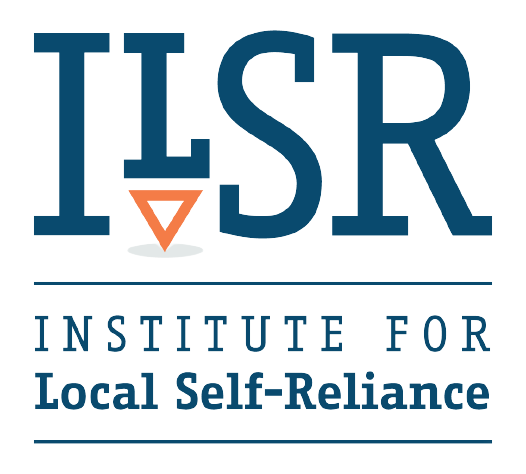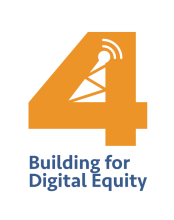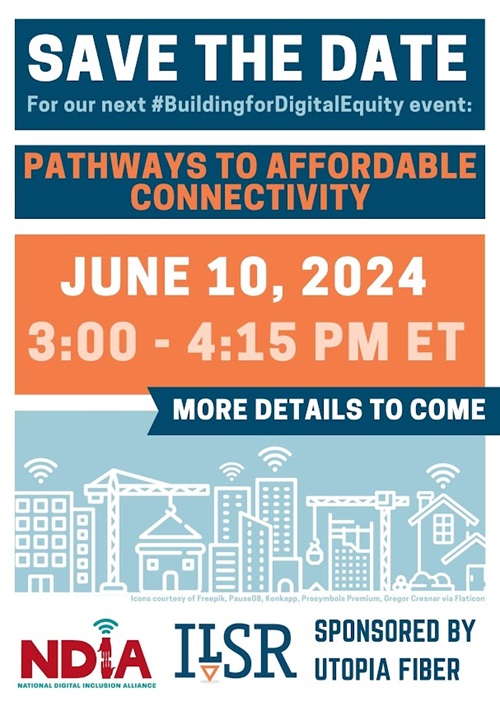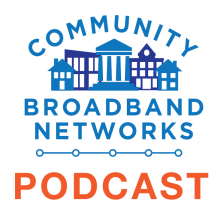
Fast, affordable Internet access for all.

*In partnership with Broadband Breakfast, we occasionally republish each other's content. The following story by Broadband Breakfast Reporter Jake Neenan was originally published here.
The Senate voted Thursday evening to pass its Federal Aviation Administration reauthorization package without an amendment that would have funded the Affordable Connectivity Program (ACP).
A bipartisan group of lawmakers had hoped to use the must-pass FAA bill as a vehicle for infusing an extra $6 billion for the imperiled broadband subsidy program, but Senate leadership was successful in keeping non-aviation amendments off the bill.

Lawmakers had mounted a last-minute effort to negotiate a vote on the amendment, with lead sponsor Sen. Ben Ray Luján, D-New Mexico, marshaling 16 bipartisan cosponsors and highlighting the support of advocates and industry groups alike on Thursday afternoon.
“There is growing bipartisan support to strengthen the Affordable Connectivity Program and keep this critical lifeline alive for more than 55 million Americans. There are now 16 Senators from both sides of the aisle, representing millions of people and diverse states, backing this amendment,” he said in a statement.
The Senate also managed to prevent a lapse in the agency’s authorization by passing a separate short-term extension. The House extended the agency’s remit until May 17 on Wednesday before leaving D.C. for the week, and will still need to vote on Thursday's five-year reauthorization package.

Welcome back to another episode of the B4DE Podcast! This time, Chris sits down for a chat with Abraham Camez, the passionate digital navigator for Hoopa Valley's Acorn Wireless ISP.
Abe paints a vivid picture of the looming consequences as the Affordable Connectivity Program (ACP) draws to a close, affecting not just the reservation but also nearby areas. About 40% of Acorn Wireless's customers, including roughly 80 folks aided by Abe himself, face the harsh reality of losing their internet lifeline.
But amidst the uncertainty, there are stories of hope. Abe shares a touching tale of a Hoopa Tribal member who turned their passion for jewelry into a successful online business, thanks to the ACP's helping hand.
As they discuss the challenges ahead, there's a resilient optimism in the air. Abe applauds the efforts of others in tackling digital equity issues head-on, showing that even in the face of adversity, there's room for progress and positivity.
This show is 11 minutes long and can be played on this page or using the podcast app of your choice with this feed.
Transcript below.
We want your feedback and suggestions for the show-please e-mail us or leave a comment below.
Listen to other episodes here or see other podcasts from the Institute for Local Self-Reliance here.
Thanks to Joseph McDade for the music. The song is On the Verge and is used per his Free-Use terms.
Newark, New Jersey is taking full advantage of its city-owned fiber network to expand affordable broadband access – with a particular eye on helping the city’s least fortunate.
Driven by past successes with city-owned fiber and Wi-Fi, Newark has announced the city is significantly expanding the availability of $20/month broadband service to numerous Newark Housing Authority (NHA) apartment buildings.

This latest partnership with Adrena leans heavily on Newark Fiber, a 288-strand city-owned fiber network. Launched in 2016, the network has steadily been expanded to connect anchor institutions. But it’s also been a cornerstone of the city’s efforts to revitalize and assist many lower income – and long neglected – Newark neighborhoods.
“Nine percent of Newark families lack computers and about 20 percent of the city doesn't have an in-home broadband connection,” Aaron Meyerson, Chief Innovation Economy Officer & Director of Broadband for the City of Newark told ILSR.
Next week an array of public interest groups, federal lawmakers, FCC officials, and digital equity advocates will converge on the Shaw/Watha T. Daniel Library in the nation’s capital for an Affordable Connectivity Program Rally.
Organized by Public Knowledge, Civic Nation, National Hispanic Media Coalition, National Digital Inclusion Alliance (NDIA), Digital Progress Institute, and Broadband Breakfast, the event will be held on April 30 beginning at 11:30 AM ET and will highlight the importance of the ACP and what happens if Congress allows the popular subsidy program to expire.

They will be joined by U.S. Rep. Yvette Clarke, U.S. Sen. Peter Welch, FCC Commissioner Anna Gomez, and FCC Commissioner Geoffrey Starks as the rally aims to bolster the chances of a discharge petition making its way to a House floor vote to extend the ACP in the face of reluctant GOP leadership.
The rally will be livestreamed by Broadband Breakfast here.
With the end of the Affordable Connectivity Program (ACP) upon us, digital inclusion practitioners are encouraged to save the date for the second Building for Digital Equity (#B4DE) event of the year.
The popular (and free) virtual gathering – co-hosted by Institute for Local Self Reliance (ILSR) Community Broadband Networks Initiative and the National Digital Inclusion Alliance (NDIA) – will be held on June 10, 2024 from 3 to 4:15 PM ET.

Coming on the heels of our last B4DE event in March, the theme for this installment will be “Pathways to Affordable Connectivity.”
It will feature an informative agenda that focuses on what digital equity advocates across the nation are doing to address broadband affordability and the pressing need for creating sustainable solutions for communities.
You can register for the event here.
As with the previous #B4DE events, the June live stream will once again be sponsored by UTOPIA Fiber and co-hosted by NDIA’s Pamela Rosales and ILSR’s Community Broadband Networks Initiative Director Christopher Mitchell.
If you missed our most recent Building for Digital Equity Livestream – Life After ACP – the virtual event can still be seen in its entirety (below).
The entire event focused on the imminent end of the Affordable Connectivity Program (ACP) and featured a lineup of speakers who shared on-the-ground perspectives and approaches being adopted at the community level to deal with the broadband affordability crisis in the absence of the popular federal program that has served 23 million Americans since its inception two years ago.
As a bonus, we are sharing links to the speakers slide decks below.
The first of two lightning round speakers, Margaret Käufer – President of The STEM Alliance – gave an overview on the short and long-term work her organization is doing in upstate New York in the face of ACP’s demise. You can find her slide deck here.
The second lightning round presenter Jason Inofuentes – Program Manager for the Broadband Accessibility and Affordability Office in Albemarle County, VA – unveiled an ACP supplement program his office is pursuing and how they see things moving forward. Those slides are here.
The first of the main presenters – Monica Gonzales, Digital Equity Supervisor for Methodist Healthcare Ministries in Texas – gave an overview of what her faith-based nonprofit healthcare organization is doing to address affordable connectivity across the 74 county South Texas region served by MHM. Gonzales’ slides are here.

In the latest episode of the podcast, Christopher reunites with Ry Marcattilio and Sean Gonsalves to tackle the conclusion of the Affordable Connectivity Program (ACP) and the pressing need for sustainable solutions to internet affordability across the United States.
Fresh from the recent Building for Digital Equity (B4DE) Event, this discussion zeroes in on internet affordability, shedding light on successful models and strategies employed by community-owned broadband networks in various municipalities. Examples from Pharr, Texas, and Chattanooga, Tennessee, illustrate effective approaches to providing affordable internet access within local communities.
Wrapping up the conversation are updates on recent developments, including the FCC's redefinition of broadband, the expansion of Longmont's municipal network in Colorado, and a sneak peek into an upcoming podcast episode covering the recent Tribal Broadband Bootcamp held at RantanenTown Ranch in Southern California.
This show is 25 minutes long and can be played on this page or using the podcast app of your choice with this feed.
Transcript below.
We want your feedback and suggestions for the show: please e-mail us or leave a comment below.
Listen to other episodes here or see other podcasts from the Institute for Local Self-Reliance here.
Thanks to Arne Huseby for the music. The song is Warm Duck Shuffle and is licensed under a Creative Commons Attribution (3.0) license.
In a recently published piece in The American Prospect, Sean Gonsalves, ILSR's Community Broadband Networks Initiative Associate Director for Communications, reports on four cities across the U.S. that are well prepared to deal with the demise of the Affordable Connectivity Program (ACP).
The article – titled "The Municipal Broadband Solution" – begins by laying out why Congress created the popular program and how letting the ACP go bankrupt undermines the national "Internet For All" Initiative now underway. However, while digital equity advocates across the nation rightly lament the demise of the program, the focus of the article is on cities that have figured out how to deliver afforable high-quality Internet access even without the ACP.
Here's a few excerpts:
Congress created the ACP to soften a harsh reality: Americans pay among the highest prices for broadband of any developed nation in the world, leaving tens of millions unable to afford internet service—something experts have long noted is a telltale sign of a broken market dominated by monopoly providers, and is at the very heart of why the U.S. digital divide is as massive as it is.
However, although federal lawmakers have known for over a year that the fund would be bankrupt by this spring, GOP congressional leaders have not budged on even bipartisan attempts to save the ACP, prompting the Federal Communications Commission (FCC) to announce in January that the agency was being forced to wind down the popular program.
It’s a major setback for the “Internet for All” effort, especially in light of a recent FCC survey that found 29 percent of ACP beneficiaries would be left without any home internet service whatsoever without the benefit, in an age when internet connectivity is a necessity for meaningful participation in 21st-century society.
Today, the first Building for Digital Equity livestream of the year will begin at 3 PM ET. The entire event will zoom in on the imminent end of the Affordable Connectivity Program (ACP) with the lineup of speakers sharing on-the-ground perspectives and approaches being adopted at the community level as they work to keep financially-strapped households connected beyond ACP.
Last minute registration are still being accepted to fill up the last few seats for the virtual gathering here.

Here’s the run-of-show:
NDIA’s Amy Huffman will set the table on where things stand with the ACP wind down process before two lightning rounds take center screen.
For the first lightning round Margaret Käufer, President of The STEM Alliance, will give an overview on the short and long-term community work her organization is doing in upstate New York in the face of ACP’s demise. That will be followed by Jason Inofuentes, Program Manager for the Broadband Accessibility and Affordability Office in Albemarle County, VA, who will spotlight an ACP supplement program his office is pursuing and how they see things moving forward.
Bringing together a nationwide cross-section of leading digital inclusion practitioners, the first Building For Digital Equity (#B4DE) livestream of the year is set to zoom in on the imminent end of the Affordable Connectivity Program (ACP).
Co-hosted by the ILSR's Community Broadband Networks Initiative and the National Digital Inclusion Alliance (NDIA), the popular (and free) virtual gathering will focus on “Life After ACP” – as the FCC continues to wind down the program with the $14.2 billion fund on track to run out of money by the end of April.
Set for March 20, 2024 from 3 to 4:15 PM ET, the lineup of speakers will share on-the-ground perspectives and approaches being adopted at the community level as they work to keep financially-strapped households connected beyond ACP.
While virtual seats for #B4DE fills up fast, registration is still open here.
Here’s the run-of-show:
NDIA’s Amy Huffman will set the table on where things stand with the ACP wind down process before two lightning rounds take center screen.